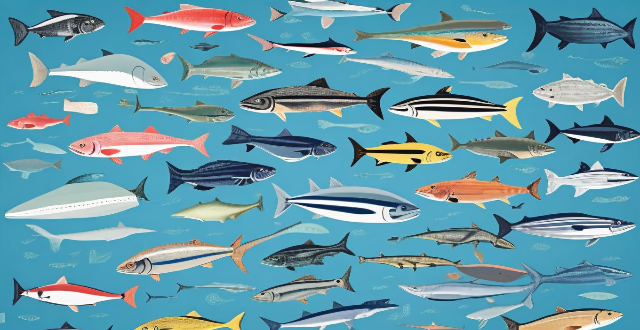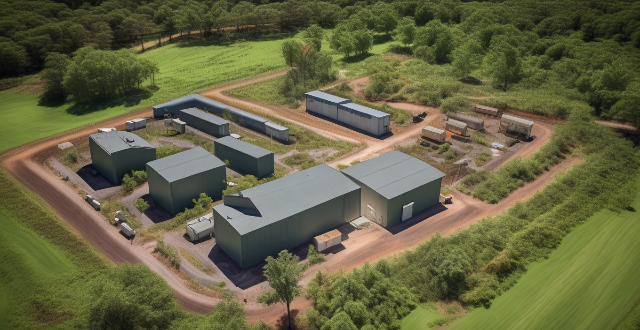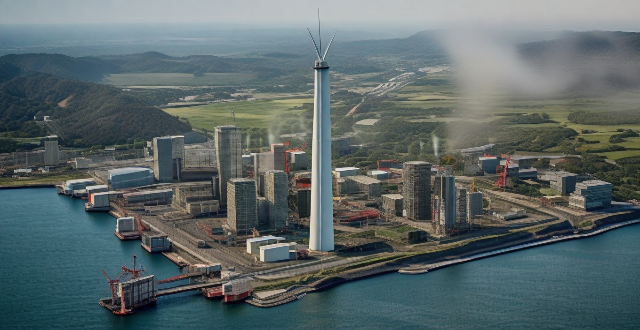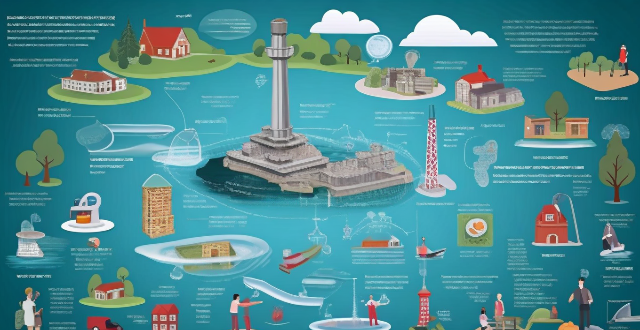Temperature Leading

How does temperature control affect food safety ?
This text discusses the impact of temperature control on food safety, emphasizing the risks associated with improper temperature management and the benefits of maintaining appropriate temperatures. It highlights the danger zone for bacterial growth, spoilage due to mold and yeast, and toxin production from bacteria. The article also outlines best practices for temperature control in refrigeration, freezing, cooking, reheating, handling, and storage to ensure food safety.

Why is temperature control important in food storage and preparation ?
Temperature control is crucial in food storage and preparation to ensure safety, quality, and longevity of food products. It prevents bacterial growth, avoids toxin production, maintains flavor and texture, preserves nutrients, extends shelf life, reduces waste, saves energy, and reduces environmental impact. Proper temperature control helps to enjoy delicious and healthy meals while minimizing the risk of foodborne illnesses and food waste.

What are the consequences of the greenhouse effect ?
The enhanced greenhouse effect, caused by human activities, has led to rising global temperatures, changes in precipitation patterns, ocean acidification, impacts on biodiversity, health implications, and economic impacts. These consequences affect various aspects of life on Earth and require action to reduce greenhouse gas emissions and mitigate the effects of climate change.

What is the ideal room temperature for optimal sleep ?
The ideal room temperature for optimal sleep is between 60-67°F (15-19°C). This range is considered to be the most conducive for a comfortable and restful sleep. The reasons for this include regulation of body temperature, improved REM sleep, reduced wakefulness, and comfort and relaxation. To achieve the ideal room temperature, consider using an air conditioner or fan, adjusting your bedding, dressing appropriately, and using a programmable thermostat.

How do different ecosystems respond to changes in temperature and precipitation patterns ?
This article discusses the impacts of changes in temperature and precipitation patterns on different ecosystems, including forests, grasslands, wetlands, and arctic tundra. It highlights how these changes can affect plant growth and productivity, species composition, water availability, nutrient cycling, soil erosion, and other ecosystem processes. The article also emphasizes the importance of understanding these impacts to inform conservation and management strategies for ecosystems in a changing climate.

What is climate change and how is it affecting the world ?
Climate change is a significant and long-term alteration in global weather patterns caused by human activities releasing greenhouse gases. These gases trap heat, leading to global warming with various environmental, socioeconomic, and humanitarian impacts. Mitigation and adaptation are crucial for minimizing these effects.

Are permanent magnet motors more susceptible to damage from high temperatures compared to other motor types ?
Permanent magnet motors are more susceptible to high temperatures due to demagnetization and thermal expansion issues, compared to induction motors and switched reluctance motors which primarily face insulation degradation and material fatigue respectively.

Why are the leaves of my indoor plant turning yellow ?
Yellowing leaves on indoor plants can indicate various issues, including improper watering, nutrient imbalances, unsuitable lighting, temperature stress, pest infestations, diseases, physical damage, or natural aging. Addressing these concerns involves adjusting watering habits, providing adequate light, using appropriate fertilizers, maintaining ideal temperatures, monitoring for pests and diseases, handling plants gently, and regular pruning. Understanding and responding to these factors can help restore the plant's health and prevent future leaf discoloration.

Which tech companies are leading the market ?
This article discusses the leading tech companies in the market, including Apple Inc., Microsoft Corporation, Amazon.com, Inc., Alphabet Inc. (Google), and Facebook, Inc. It highlights their key products and services, such as Apple's innovative devices, Microsoft's software and cloud services, Amazon's e-commerce platform and AWS, Google's search engine and Android OS, and Facebook's social media platforms and advertising revenue. The article also notes the competitive nature of the tech industry and the potential for new leaders to emerge in the future.

What is the ideal temperature for indoor plant growth ?
Indoor plants generally thrive in temperatures between 65°F to 75°F during the day and slightly cooler at night, along with proper humidity and air circulation. Maintaining these conditions helps promote healthy growth and flowering. Use a thermometer, avoid drafts, and adjust heating or cooling as needed to keep plants comfortable.

How do changing ocean temperatures influence fish migration patterns ?
This article explores how changing ocean temperatures influence fish migration patterns, affecting fish populations and the fishing industry. Water temperature plays a crucial role in fish metabolism, growth rates, reproduction, and survival, making it essential to understand its impact on migration patterns. Changing ocean temperatures can alter habitat conditions, food availability, cause physiological stress, and affect reproduction, leading to decreased abundance, shifting fishing grounds, economic losses, and ecosystem disruption. Monitoring ocean temperatures and adapting fishing practices are crucial for managing fish populations sustainably and mitigating the negative impacts of climate change on marine ecosystems.

What factors affect the performance and lifespan of a power battery ?
The performance and lifespan of a power battery are influenced by various factors, including charging habits, discharge rates, temperature conditions, mechanical stress, age, quality of the Battery Management System (BMS), and chemical composition. Overcharging or undercharging can lead to reduced lifespan due to heat buildup or memory effect, respectively. High discharge rates and deep depths of discharge can stress the battery and shorten its longevity. Temperature extremes and fluctuations affect efficiency and stability, while mechanical impacts and vibrations can cause physical damage. Aging is an inevitable factor, but a well-designed BMS can mitigate many issues related to charge and temperature control. Different chemical compositions also play a role in stability and lifespan characteristics. Proper care and management are essential for optimizing battery performance and extending its lifespan.

How does climate change impact the nutritional value of crops ?
Climate change is affecting the nutritional value of crops by altering CO2 levels, temperature fluctuations, and water availability. Elevated CO2 concentrations can lead to nutrient dilution in staple crops like wheat, rice, and soybeans. Temperature extremes cause protein denaturation and interfere with enzyme function, reducing nutrient content. Water stress from drought or flooding impairs nutrient uptake and synthesis. Adaptation strategies include breeding resilient crop varieties, implementing efficient irrigation systems, and using protective structures against extreme temperatures. By addressing these challenges, it's possible to maintain crop nutrition amidst climate change impacts.

How do weather conditions affect air quality ?
Weather conditions significantly affect air quality by influencing the dispersion, accumulation, and transformation of pollutants. High temperatures can increase ozone levels, while low temperatures can trap pollutants near the ground. Wind helps disperse pollutants, improving air quality, but calms can lead to pollutant buildup. Precipitation, like rain and snow, can wash pollutants from the air. High humidity promotes ozone formation but aids in particle removal, whereas low humidity inhibits some pollutants and suspends dust. Temperature inversions trap pollutants, degrading air quality, while cold fronts and storms can clean the air through winds and precipitation.

How do different climates affect the choice and efficiency of energy storage systems ?
Climate plays a crucial role in determining the type, choice, and efficiency of energy storage systems. Variations in temperature, humidity, and other environmental factors can significantly impact the performance and longevity of these solutions. For instance, high temperatures can cause battery degradation and reduce their lifespan, while low temperatures can decrease the battery's capacity and output power. High humidity can cause corrosion and damage to the battery's components, reducing its lifespan and efficiency. Similarly, climate change can affect the availability of water for pumped hydro storage systems, and higher temperatures can increase evaporation rates, reducing the amount of water available for energy storage. Therefore, it is essential to consider the local climate conditions when selecting and designing energy storage systems to maximize their performance and longevity.

How does the greenhouse effect affect weather patterns ?
The greenhouse effect is a natural process that maintains Earth's warm temperatures, making life possible. However, human activities like burning fossil fuels and deforestation have increased the concentration of greenhouse gases, leading to global warming. This enhanced greenhouse effect affects weather patterns by causing higher global temperatures, changes in precipitation patterns, extreme weather events, disruption of seasonal patterns, and changes in ocean currents. Addressing this issue requires reducing greenhouse gas emissions and adapting to the changing climate.

What countries are leading in wind energy production ?
The leading countries in wind energy production are China, the United States, Germany, India, and Spain. China has the largest installed capacity with 282 GW as of 2021, followed by the US with 119 GW, Germany with 60 GW, India with 38 GW, and Spain with 26 GW. These countries have seen rapid growth and innovation in their wind energy sectors, with key regions and states contributing significantly to their overall output. Their efforts demonstrate a commitment to reducing carbon emissions and transitioning towards sustainable energy sources.

How do different regions of the world experience climate variability differently ?
The article discusses climate variability and how different regions of the world experience it. Tropical regions have high temperatures and rainfall but also extreme weather events like hurricanes and monsoons, influenced by El Niño Southern Oscillation (ENSO). Arid and semi-arid regions face very little precipitation and high temperatures, making them vulnerable to climate change impacts. Polar regions experience extreme cold temperatures and limited sunlight in winter, with rapid warming due to climate change leading to melting ice caps and rising sea levels. Temperate regions have moderate temperatures and seasonal precipitation variations, with four distinct seasons and varying weather patterns, but can still be affected by extreme weather events like floods, droughts, and heatwaves.

What are the long-term implications of neglecting climate adaptation efforts ?
Neglecting climate adaptation efforts can have far-reaching and long-lasting implications for our planet, its ecosystems, and human societies. These implications are multifaceted and interconnected, affecting various aspects of life on Earth. Below, we will explore some of the key long-term implications in detail: ### **Environmental Consequences** #### *Loss of Biodiversity* - **Habitat Destruction**: Rising temperatures and changing weather patterns can disrupt habitats, leading to a decline in biodiversity. - **Species Extinction**: Some species may not be able to adapt quickly enough to the changing conditions, resulting in extinction. #### *Ocean Acidification* - **Marine Ecosystems**: Increased carbon dioxide levels in the atmosphere lead to ocean acidification, which harms marine life, especially shellfish and coral reefs. ### **Economic Impacts** #### *Agriculture and Food Security* - **Reduced Crop Yields**: Changes in temperature and precipitation patterns can negatively affect crop yields, leading to food scarcity and price hikes. - **Livestock Production**: Heat stress and changes in feed quality can impact livestock production, further exacerbating food security issues. #### *Infrastructure Damage* - **Coastal Erosion**: Rising sea levels can cause coastal erosion, damaging infrastructure such as roads, buildings, and energy facilities. - **Extreme Weather Events**: More frequent and severe weather events like hurricanes, floods, and droughts can cause significant damage to infrastructure and lead to costly repairs. ### **Social and Health Impacts** #### *Displacement and Migration* - **Climate Refugees**: As living conditions deteriorate due to climate change, people may be forced to leave their homes, leading to mass migration and potential conflicts over resources. - **Urbanization**: People may move to cities seeking better living conditions, which could strain urban infrastructure and services. #### *Health Risks* - **Heat-related Illnesses**: Higher temperatures can lead to heat stroke, dehydration, and other heat-related illnesses. - **Spread of Diseases**: Warmer temperatures can expand the range of disease-carrying organisms like mosquitoes and ticks, increasing the risk of diseases like malaria, dengue fever, and Lyme disease. ### **Summary** Neglecting climate adaptation efforts has far-reaching consequences that extend beyond environmental degradation to include economic instability, social unrest, and public health risks. It is crucial for governments, businesses, and individuals to take proactive steps towards climate adaptation to mitigate these long-term implications and ensure a sustainable future for all.

How does the climate emergency affect biodiversity and ecosystems ?
The climate emergency is causing significant changes in global temperatures, weather patterns, and precipitation, which have profound impacts on biodiversity and ecosystems. These effects include habitat loss and alteration due to rising sea levels, changing precipitation patterns, and temperature fluctuations. Species are being displaced or facing extinction as they struggle to adapt to new conditions, leading to disrupted food webs. The decline in ecosystem services such as water regulation, nutrient cycling, and disease regulation further exacerbates the situation. Resilience and adaptation challenges highlight the need for immediate action to mitigate damage and promote ecological resilience through conservation and sustainable practices.

What are the ethical implications of climate change on human rights ?
Climate change affects the fundamental rights of individuals and communities worldwide through its impacts on health, food security, water access, and displacement. Rising temperatures and extreme weather events can lead to an increase in heat-related illnesses, respiratory problems, and infectious diseases, as well as exacerbate existing health disparities. Changes in temperature and precipitation patterns can disrupt agricultural production, leading to crop failures and reduced yields, resulting in food shortages, increased prices, and malnutrition. Climate change poses significant threats to water availability and quality, with rising temperatures leading to increased evaporation rates, droughts, and water scarcity. Displacement due to rising sea levels, flooding, and other environmental factors can result in loss of homes, livelihoods, and social networks, as well as increased vulnerability to violence and exploitation. It is imperative that governments, international organizations, and individuals take urgent action to mitigate the effects of climate change and protect the fundamental rights of all people, prioritizing the needs of vulnerable populations.

What are some tips for leading a successful study group ?
Leading a successful study group requires careful planning, effective communication, and strong leadership skills. To achieve this, it is important to set clear objectives, organize meetings effectively, encourage active participation, foster collaboration and teamwork, and evaluate progress regularly. By following these tips, you can create a productive and enjoyable learning experience for all members of your study group.

How does climate change impact human rights ?
The impact of climate change on human rights is multifaceted and far-reaching. It affects health and well-being, food security, water access, displacement and migration, and indigenous rights. Extreme weather events can cause physical harm and death, while rising temperatures can lead to an increase in infectious diseases. Changes in temperature and precipitation patterns can disrupt agricultural production, leading to crop failures and food shortages. Water scarcity can occur as glaciers and snowpacks melt faster than they can be replenished. Displacement and migration can have serious consequences for safety, security, and rights. Indigenous communities are often particularly vulnerable to the impacts of climate change because they rely heavily on natural resources for their livelihoods and cultural practices.